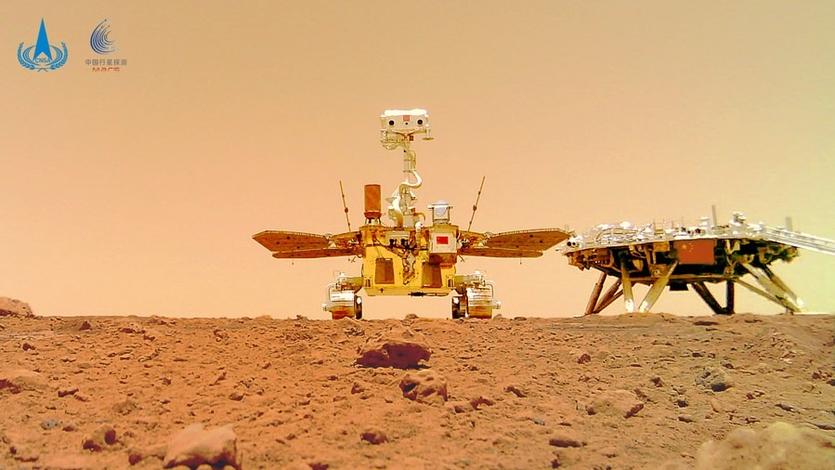 Photo released on June 11, 2021 by the China National Space Administration shows a selfie of China's first Mars rover Zhurong with the landing platform. (CNSA / HANDOUT VIA XINHUA)
Photo released on June 11, 2021 by the China National Space Administration shows a selfie of China's first Mars rover Zhurong with the landing platform. (CNSA / HANDOUT VIA XINHUA)
BEIJING - China's Mars probe Tianwen-1 and the European Space Agency's Mars Express spacecraft have successfully performed an in-orbit relay communication test, the China National Space Administration said on Wednesday.
China's Mars rover Zhurong sent test data to Mars Express over a distance of approximately 4,000 kilometers. The communication lasted 10 minutes.
Data analysis results show that the relay communication equipment interfaces of Zhurong and Mars Express match and conform to international standards, and the contents of the transmitted data are complete and correct
Mars Express received the data and forwarded it to the ESA's deep space tracking station. After receiving the data, the station sent it to the European Space Operations Center, and the ESOC then forwarded the data to the Beijing Aerospace Control Center.
ALSO READ: China's Mars orbiter resumes communications with Earth
Data analysis results show that the relay communication equipment interfaces of Zhurong and Mars Express match and conform to international standards, and the contents of the transmitted data are complete and correct.
The Tianwen-1 team and the Mars Express team will undertake further cooperation in scientific data relay communication, according to the CNSA.
China's Tianwen-1 mission, consisting of an orbiter, lander, and rover, was launched on July 23, 2020.
The lander, carrying the rover with an expected lifespan of at least 90 Martian days or about three months on Earth, touched down on May 15 in the southern part of Utopia Planitia, a vast plain in the northern hemisphere of Mars.
Starting its exploration, Zhurong drove down from its landing platform to the Martian surface on May 22.
READ MORE: China's Mars rover travels more than 400 meters
As of Wednesday, Zhurong has worked on Mars for 196 Martian days. It has traveled 1,297 meters and obtained about 10 gigabytes (GB) of data, according to the CNSA.
It has sufficient energy and is in good condition, the CNSA said.


